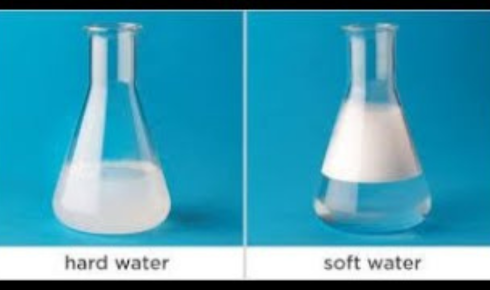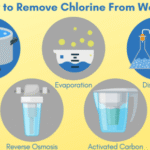Ever stood near a window on a sunny afternoon, only to notice stubborn white streaks or dull marks glaring back at you? Glass, for all its elegance, has one annoying flaw—it loves to keep reminders of every splash, spill, and storm. From bathroom mirrors to shower doors, kitchen glassware to car windows, these cloudy imprints sneak up on even the most diligent cleaners.
We all know that sparkle a clean piece of glass gives—it somehow makes a space feel more open, calm, and intentional. But getting there? That’s where most of us end up frustrated, armed with paper towels and sprays that just move the grime around. Let’s talk about what really works—and what doesn’t—when you’re trying to remove stains from glass without losing your patience or scratching the surface.
Understanding What You’re Up Against
The first step to winning this quiet war is knowing what caused the problem in the first place. Glass doesn’t stain randomly—it reacts. Minerals from hard water, acidic rain, cleaning chemicals, even fingerprints full of natural oils all bond to the surface differently. Some stains sit lightly on top and can be wiped off easily, while others dig deep into the pores of the glass (yes, glass is slightly porous).
That’s why the same trick that works on your kitchen window might fail miserably on a shower door. It’s all about matching the cleaner to the cause.
DIY Cleaning Magic — The Gentle Way
Sometimes, the best glass-cleaning weapon isn’t found in an expensive bottle but right in your pantry. White vinegar, for example, is a natural hero here. Mix it half-and-half with warm water, spritz generously, and let it rest for a few minutes before wiping clean with a microfiber cloth.
If you’re dealing with tougher marks, add a spoonful of baking soda into the mix. The mild abrasiveness gives you just enough grit to loosen up mineral deposits without scratching. It’s simple chemistry in action—acids dissolve minerals, and the baking soda helps lift them away.
Water Spots: The Persistent Enemy
Anyone who’s lived with hard water knows this pain. You clean your shower door, it sparkles… and the next day, it’s spotted again. These spots aren’t dirt—they’re dried-up traces of calcium and magnesium, leftover from water droplets that have evaporated.
The trick is catching them early and preventing buildup. After every shower, a quick wipe-down or squeegee swipe can go a long way. But if they’ve already made themselves at home, you’ll need something stronger. Try rubbing a lemon slice directly on the affected area. The natural citric acid breaks down the minerals beautifully, leaving behind that clean scent we all secretly love.
Over time, you’ll find that knowing how to get water spots off of glass becomes less about scrubbing harder and more about maintaining a quick daily ritual. Clean glass isn’t a one-time achievement—it’s a habit.
When DIY Doesn’t Cut It
Sometimes, home remedies hit their limit. If your glass looks hazy even after cleaning, chances are the minerals have etched into it. Etching means the glass surface itself is slightly damaged—think of it like a scar. At that point, vinegar won’t help much.
You can try a specialized restoration compound made for water stained glass. These products are often used by professionals and contain polishing agents that carefully wear down the surface just enough to restore clarity. A buffer pad attachment on a drill or polisher can make this process much smoother, but it requires patience and a steady hand.
If that still doesn’t cut it, calling a professional glass restoration service might be the smarter move. They’ve got access to commercial-grade compounds and polishing systems designed to revive even deeply stained glass.
Glass Maintenance: The Long Game
Glass doesn’t stay clean forever, but you can definitely slow down its decline. The easiest trick? Create a barrier. Once your glass is spotless, use a hydrophobic coating (similar to what’s used on car windshields). It makes water bead and roll off instead of sticking and drying into spots.
Even a simple coat of car wax can work wonders—yes, the same one you use for your vehicle. Buff it gently with a soft cloth, and you’ll be amazed how water simply slides away next time.
Another underrated tip: switch to distilled water when cleaning. Tap water can undo your hard work by leaving fresh minerals behind the moment it dries. A little switch like this makes a noticeable difference.
The Emotional Side of Clean
There’s something weirdly satisfying about clean glass. It’s not just about aesthetics—it’s clarity, quite literally. You notice how much more open your kitchen feels, how sunlight finally dances freely across the room. Clean glass invites more light and less distraction. It’s almost therapeutic, especially in spaces you see every day.
Maybe that’s why people become borderline obsessed with spotless mirrors or streak-free car windshields. It’s not vanity; it’s the quiet joy of seeing clearly through something again.
Wrapping It All Up
Glass is beautiful, but also delicate. Whether you’re scrubbing your bathroom mirror or a window that’s seen too many storms, it’s about patience and the right tools—not brute force.
A mix of science and habit keeps it shining: vinegar for dissolving minerals, baking soda for gentle lift, lemon for that satisfying finish, and wax for protection. Some battles require special compounds or even expert help, but most just need a bit of care and consistency.
So next time you notice a dull haze or a faint ring of dried water, don’t sigh in defeat. Think of it as an invitation—a small reminder that even the clearest things in life sometimes need a little attention to stay transparent. Clean glass isn’t perfection; it’s perspective.



